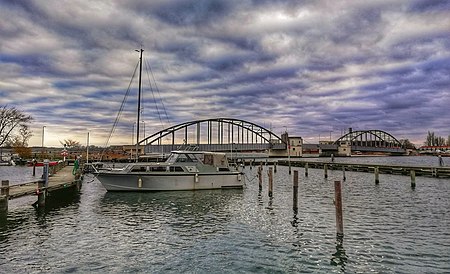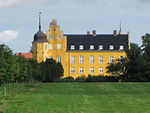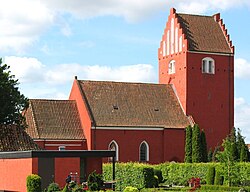Guldborgsund Bridge
1934 establishments in DenmarkArch bridges in DenmarkBascule bridgesBridges completed in 1934Bridges in Denmark ... and 6 more
Buildings and structures in Guldborgsund MunicipalityDanish building and structure stubsDenmark transport stubsEuropean bridge (structure) stubsRoad bridges in DenmarkThrough arch bridges

The Guldborgsund bridge (Danish: Guldborgbroen) spans the northern end of the Guldborgsund, between the islands of Lolland and Falster in Denmark. The bridge consists of two steel arched spans with a 30m central opening section having two rising bascules. It was built between 1933 and 1934, is 180m long and 7m wide, carrying two road carriageways and was officially opened by Prince Axel of Denmark on 6 October 1934.
Excerpt from the Wikipedia article Guldborgsund Bridge (License: CC BY-SA 3.0, Authors, Images).Guldborgsund Bridge
Guldborgvej, Guldborgsund Municipality
Geographical coordinates (GPS) Address Nearby Places Show on map
Geographical coordinates (GPS)
| Latitude | Longitude |
|---|---|
| N 54.871111111111 ° | E 11.748333333333 ° |
Address
Guldborgvej 358
4862 Guldborgsund Municipality
Region Zealand, Denmark
Open on Google Maps










